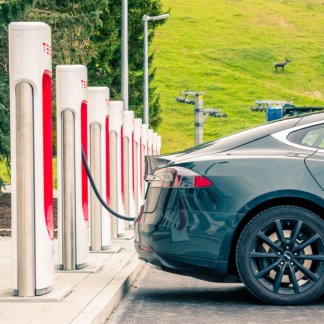It is now the turn of the Kia EV6 to confront Ford’s electric SUV, the Mustang Mach-E. We will see together in this comparison all the similarities and differences between the two vehicles to help you determine which one will suit you the most.
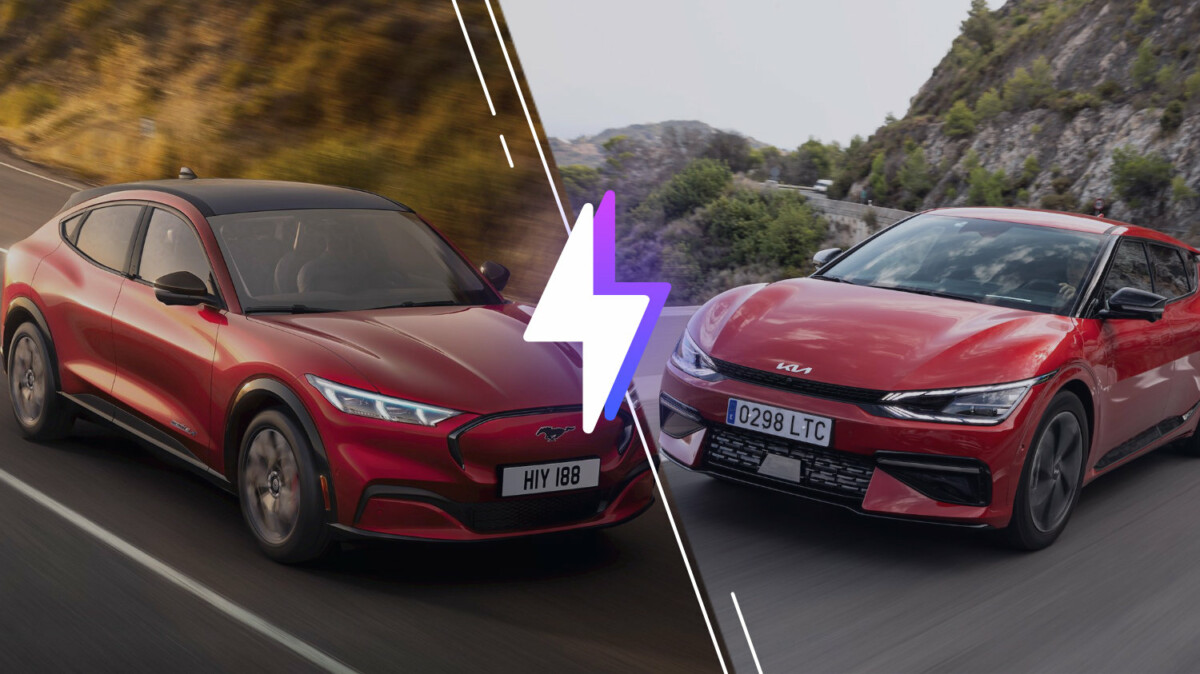
In the land of electric SUVs, Kia’s proposal is very attractive. In addition to the atypical look, the EV6 has major advantages thanks to its 800 Volt battery architecture. On the other hand, the Ford Mustang Mach-E is the first serious proposition of the American manufacturer in the world of electric.
With these two electric cars available today, it may be legitimate for potential buyers not to know which one to choose. We will therefore examine them in detail, and at the end of this file you will no doubt know which one is made for you.
Ford Mustang Mach-E and Kia EV6 specs
| Model | Ford Mustang Mach-E | Kia EV6 |
|---|---|---|
| Category | SUV | Crossovers |
| Power (horses) | 337 horsepower | 228 horsepower |
| Power (kw) | 225kW | 160kW |
| 0 to 100 km/h | 4.9 seconds | 5.2 seconds |
| Level of autonomy | Assistance | Complete autonomy |
| Max speed | 180 km/h | N/C |
| Main screen size | 15 inches | 12.3 inches |
| Car side sockets | Type 2 Combo (CCS) | Type 2 Combo (CCS) |
| Length | 4712mm | 4680mm |
| Height | 1597mm | 1550mm |
| Width | 1881mm | 1880mm |
| Entry-level price | 48990 euro | 45000 euros |
| Maximum Weight | N/C | 1600kg |
Product sheet See the test | Product sheet See the test |
Dimensions, weight and exterior design
With its mythical “Mustang” logo applied to the rear trunk, the Ford Mustang Mach-E catches the eye. Sculpted front lights to highlight the sporty side, sharp lines all along the body, and more “coupé” than SUV look, it is a successful design that the American manufacturer offers us.
In terms of dimensions, the Mustang Mach-E is not a small car, far from it: 4.71 meters long, 1.62 meters high and 1.88 meters wide. The Kia EV6 is almost identical on paper, with 4.68 meters long, 1.88 meters wide and 1.55 meters high. The weight of the two vehicles is also comparable, with on one side between 1,920 and 2,170 kilograms for the EV6, and between 1,969 and 2,273 kilograms for the Mustang Mach-E.

For sure, the concept car look of the EV6 will not leave anyone indifferent: its rear light signature is easily recognizable when the sporty lines show that this SUV is not there to go unnoticed.
Inside
With a wheelbase of almost three meters, the Mustang Mach-E could be more generous in terms of interior space. Indeed, especially at the front, the center console is a little too imposing and encroaches on the habitability reserved for the legs of the occupants. The volumes of the trunks are just correct for the segment, with 402 liters at the rear and 81 liters at the front.
Apart from this small negative point, the materials used are of high quality (imitation leather for the upholstery, a few touches of fabric on the dashboard), and the ergonomics are worked. In the center, the large screen in portrait format, for example, has a notched wheel used to control the temperature or the volume of the media, which is diabolically effective.

As for the Kia EV6, with a wheelbase a few centimeters smaller than the Mustang Mach-E, the space on board is still more generous. The lion’s share is given to the front passengers who will even be able to take advantage of seats that extend, a very practical feature during refills of a few tens of minutes.
The rear trunk of 490 liters (22% larger than the Mustang Mach-E) will store enough luggage to leave with the family, and the space in the back is generally very good.
Embedded technologies
There aren’t many technologies missing from the Ford Mustang Mach-E. Indeed, Ford had the good idea to equip its electric SUV with generosity: Android Auto, Apple Carplay, smartphone charging by induction, USB-C and USB-A ports, 360-degree camera, key on smartphone, or even heated and ventilated seats, it’s all there.
We particularly appreciate the display just behind the steering wheel, which provides useful information for the driver (range, battery level, etc.) and allows the status of the car to be monitored without looking away.
On board the Kia EV6, the layout is slightly different: two screens in landscape format follow each other to form a large space available for the front passengers to consult everything relating to the vehicle, the media and the navigation.

Android Auto and Apple Carplay are also available, and some versions offer a head-up display and an augmented reality view of the vehicle to perform parking maneuvers with complete peace of mind.
On the road
The Kia EV6 has paddles on the steering wheel that control regenerative braking, which encourages you to adopt different driving depending on the course profiles. We will appreciate the “freewheel” mode on the highway, while one-pedal driving with maximum engine braking will be ideal in urban areas.
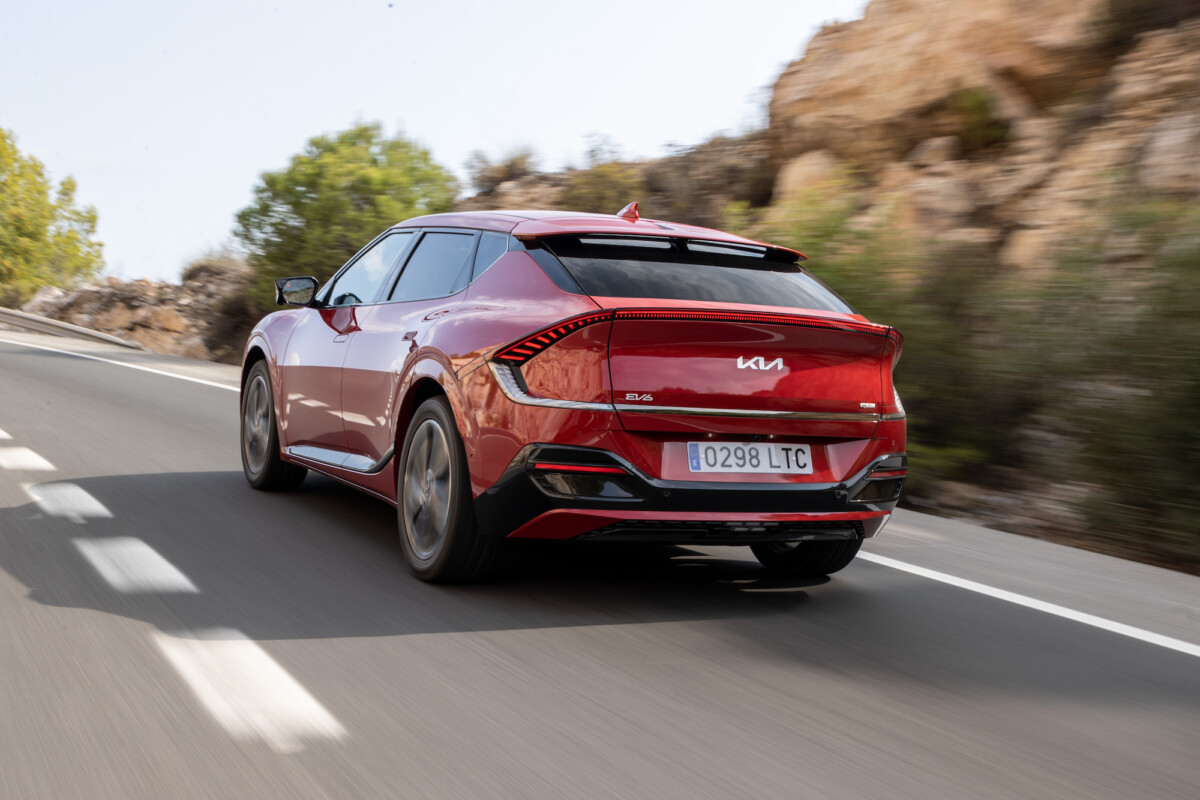
The base versions of the EV6 only develop 229 horsepower: for a car weighing nearly two tonnes, that’s too little to be slammed into the seat by pressing the right pedal. The Ford Mustang Mach-E offers road behavior that is very different from the EV6, with excellent road holding and millimeter steering management that will reveal the full potential of this Mustang on the secondary network.
The different engines offered
The Ford Mustang Mach-E is available in three different versions:
- Mach-E: rear-engine, rear-wheel-drive, 0-100 km/h in 6.2 seconds, top speed 180 km/h;
- AWD: front and rear engine, all-wheel drive, 0-100 km/h in 5.1 seconds, top speed 180 km/h;
- GT: front and rear engine, all-wheel drive, 0-100 km/h in 3.7 seconds, top speed 200 km/h.
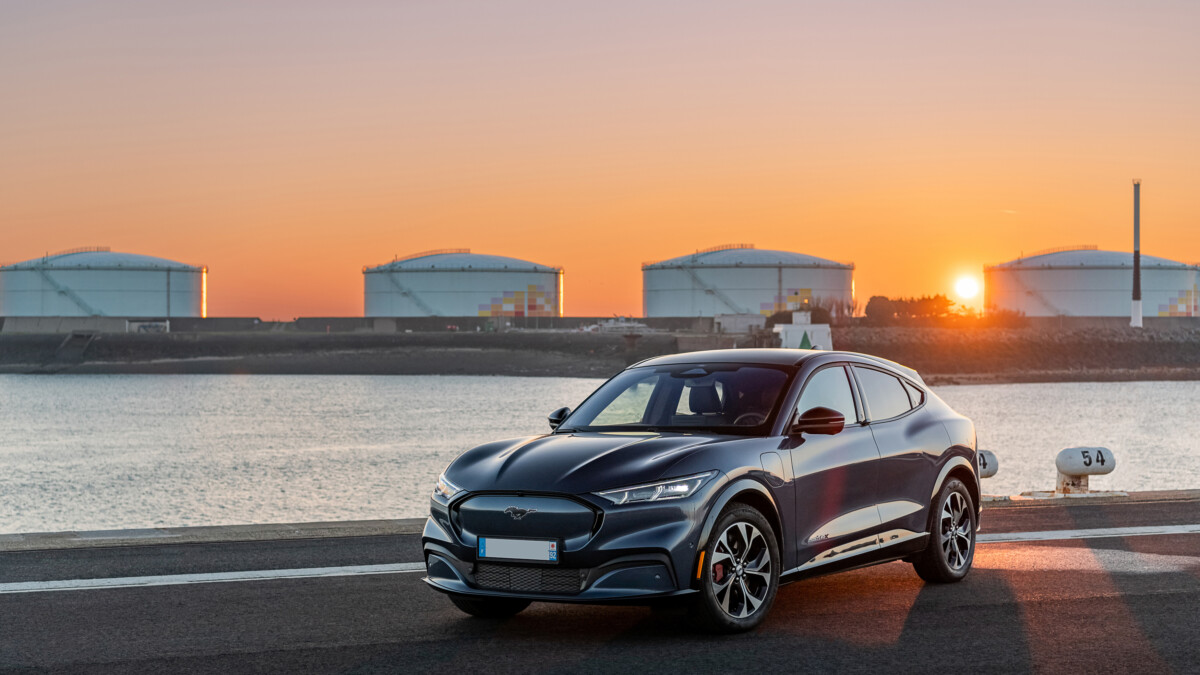
The Kia EV6 is available today with three different engines:
- EV6 2-wheel drive, 77 kWh battery propulsion: rear motor only, 0-100 km/h in 7.3 seconds, top speed 188 km/h;
- EV6 4×4, all-wheel drive with 77 kWh battery: front and rear motor, 0-100 km/h in 5.2 seconds, top speed 188 km/h;
- EV6 GT, all-wheel drive with 77 kWh battery: front and rear motor, 0 to 100 km/h in 3.5 seconds, top speed 260 km/h.
Autonomy, battery and charging
With its 800 Volt battery architecture, the queen of fast charging in this comparison is unequivocally the Kia EV6. Count less than 20 minutes to add 70% of the battery to the Ionity terminals, which makes the Ioniq 5 the best car on the market in terms of fast charging.
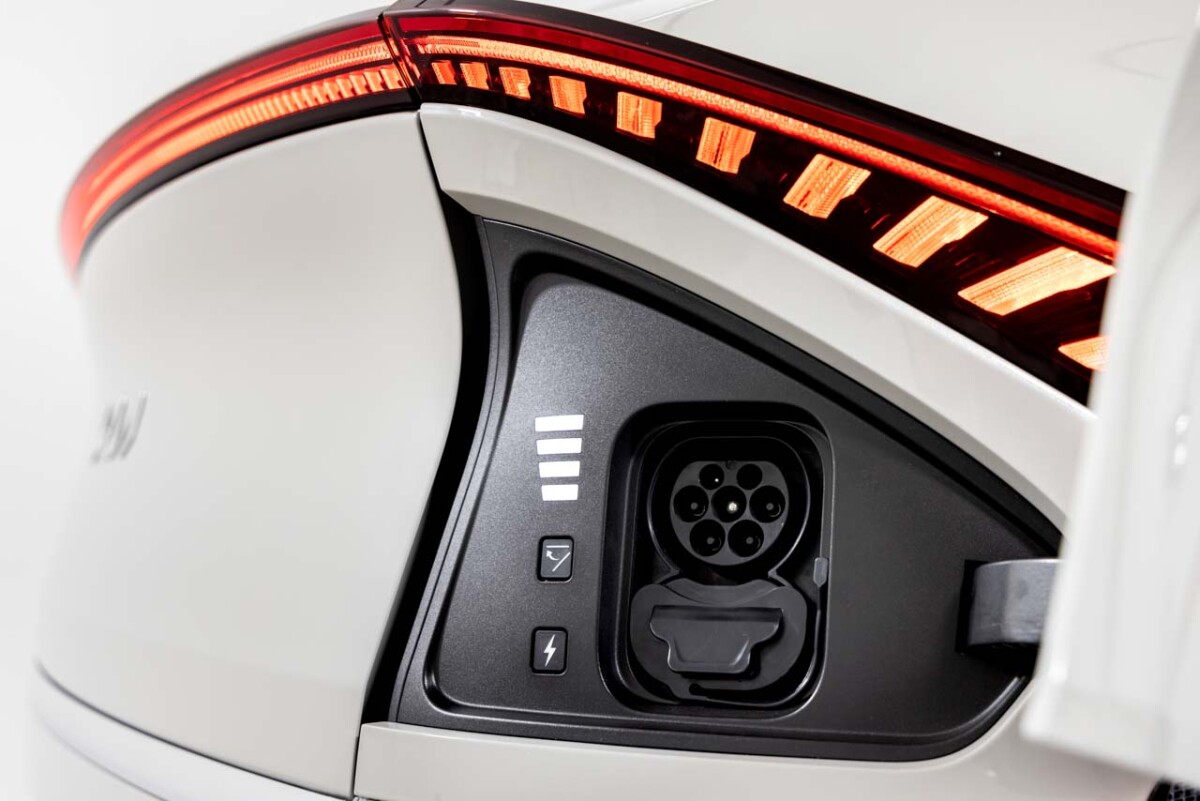
The CCS port of the Kia EV6
Autonomy in the WLTP cycle is announced by Kia as being between 406 kilometers and 528 kilometers depending on the versions selected. The 11kW on-board charger will fully charge the EV6’s battery in about seven hours, compared to up to 10 hours for the Mustang Mach-E equipped with the large 99kWh battery.
With a range of between 400 and 610 kilometers WLTP, the Mustang Mach-E seems interesting for backpackers. However, unlike the EV6 which is a hit in fast charging, the Mustang is limited to 150 kW (115 kW on versions equipped with the 76 kWh battery), i.e. a waiting time of 45 minutes to reach 80% battery. under ideal conditions.
Price
The starting price of the Kia EV6 is set in France at 47,990 euros, not including the ecological bonus. With versions that offer four-wheel drive and much better performance, playing with the catalogs of options, we reach a price of 66,990 euros.

The exterior of the Ford Mustang Mach-E
The American is offered from 50,450 euros, almost 2,500 euros more than the EV6. The range goes up to 80,250 euros for a Mustang Mach-E GT, Extended Range AWD, reserved for customers who are not afraid of an XXL price.
Which to choose between the Ford Mustang Mach-E and the Kia EV6?
At the end of the comparison, you will no doubt have determined which of the Mustang Mach-E or the Kia EV6 will be made for you. If the EV6’s concept-car looks put you off, and the Mustang Mach-E’s more modest fast-charging performance doesn’t bother you, this is the American for you.
On the other hand, if long journeys are quite frequent, you will greatly appreciate the breaks that do not exceed 20 minutes aboard the Kia EV6. In return, it will be necessary to accept a less sporty behavior and a slightly lower autonomy than that of Ford’s SUV.
To follow us, we invite you to download our Android and iOS application. You can read our articles, files, and watch our latest YouTube videos.

